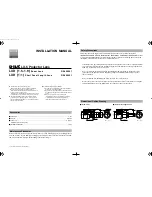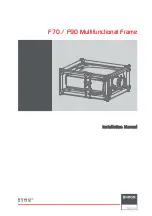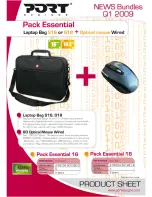
Page 6
Stainless Steel Temperature Probe
Using Shielded Extension Cables
With the industrial version of the temperature probe, you may use Shielded
2-Twisted Pair extension cables (Product #7884) to extend the sensor cable
length. When using Shielded 2-Twisted Pair extension cables,
cut off the RED
wire at both ends of the cable
. Do not splice the red wire to the sensor cable or
connect it to the SIM.
Mounting the Sensor
Depending on your use for this sensor, you may install it following the sugges-
tions below:
✦
For air temperature, use a cable tie, cable clip, or electrical tape to attach the
cable to a building, post, antenna mast, or other surface (make sure the sensor
itself is not in contact with the building’s surface). Consult the Radiation Shield
manual for instructions on installing the sensor in the Radiation Shield.
✦
For soil temperature, bury the sensor at a depth suitable for your purposes.
Where the cable runs along the ground, use metal or plastic conduits to protect
the cable from rodents.
✦
For water temperature, drop the sensor into the water at a depth suitable for
your purposes. If the cable runs along the ground at any point, use metal or plas-
tic conduits to protect the cable from rodents.
In any case, to prevent fraying or cutting of the sensor cable where it is exposed
to weather, it is important that you secure it so it doesn’t whip about in the
wind. For example, you might want to use cable clips or weather resistant cable
ties to secure the cable. Place clips or ties approximately every 3 to 5 feet
(1 to 1.6 m). Do not use metal staples or a staple gun to secure cables. Metal sta-
ples—especially when installed with a staple gun—have a tendency to cut the
cables.
S
ECURING
C
ABLE
(S
TANDARD
C
ABLE
S
HOWN
)
Note:
When running the sensor cable, try not to tug on the cable in such a way as to loosen the
connections between cables. Also, make sure the sensor cable is not so taut that connections
loosen or pull free due to the strain. Many sensor problems occur because cable connections
come loose. If you need to check you cable connection to the sensor itself, see the section
below.


























